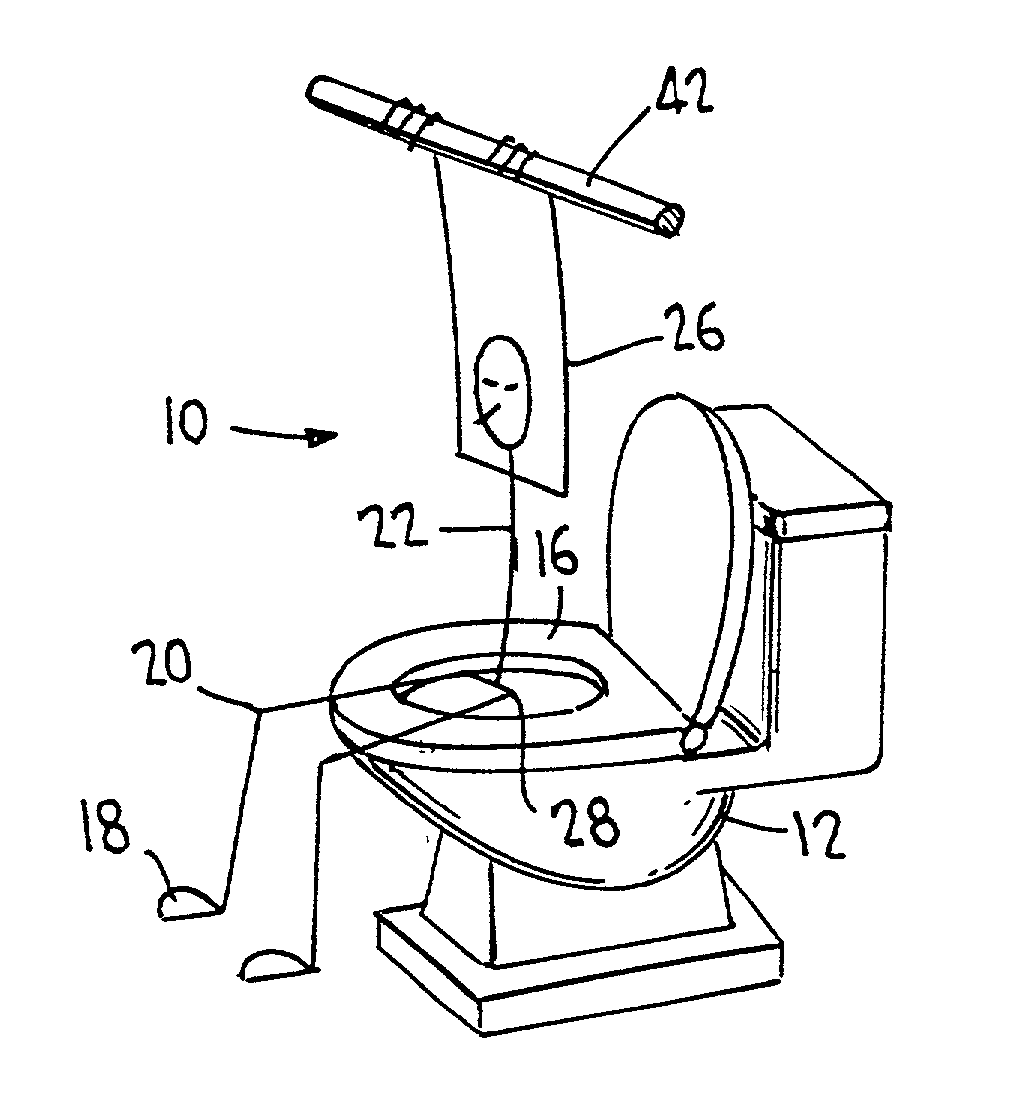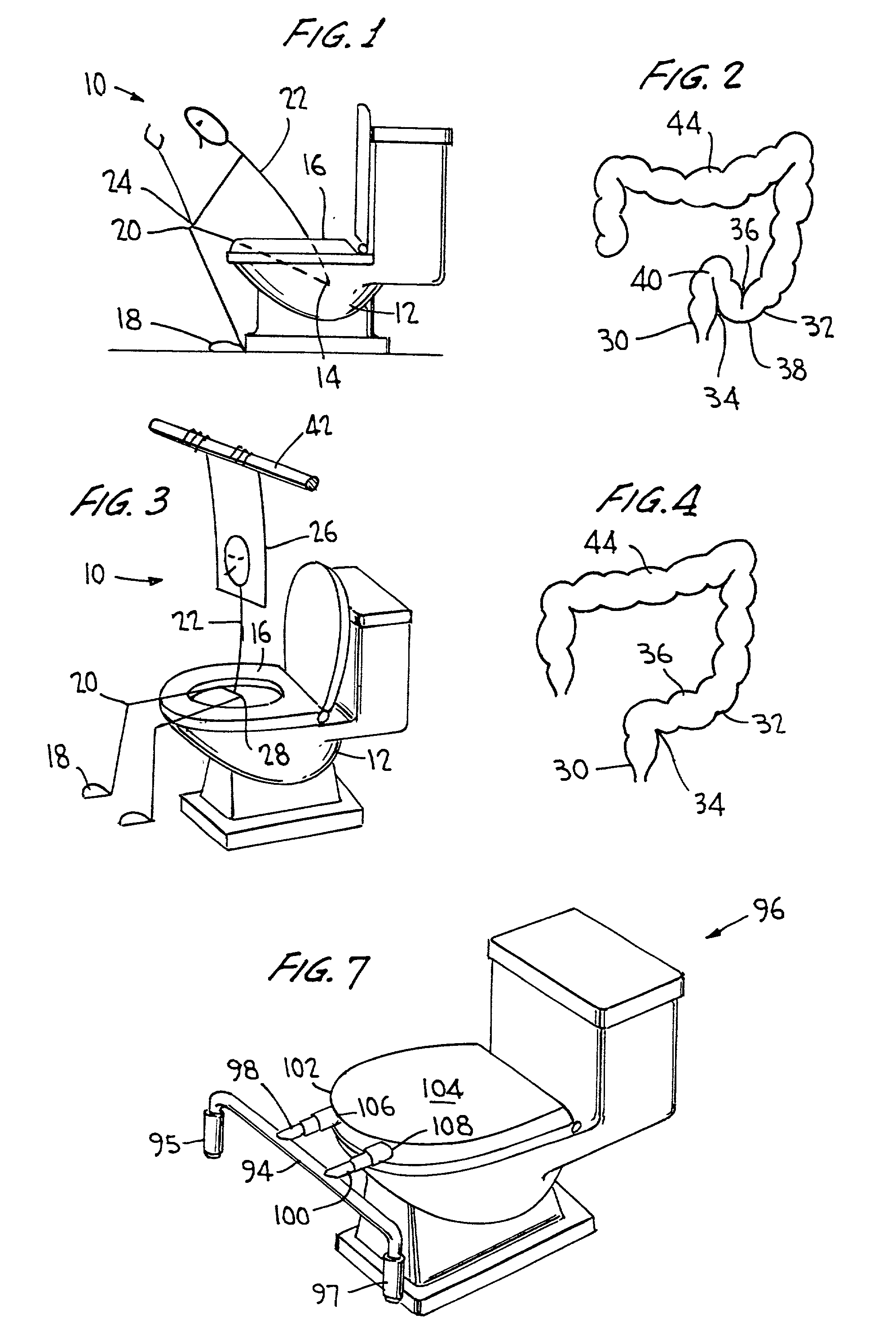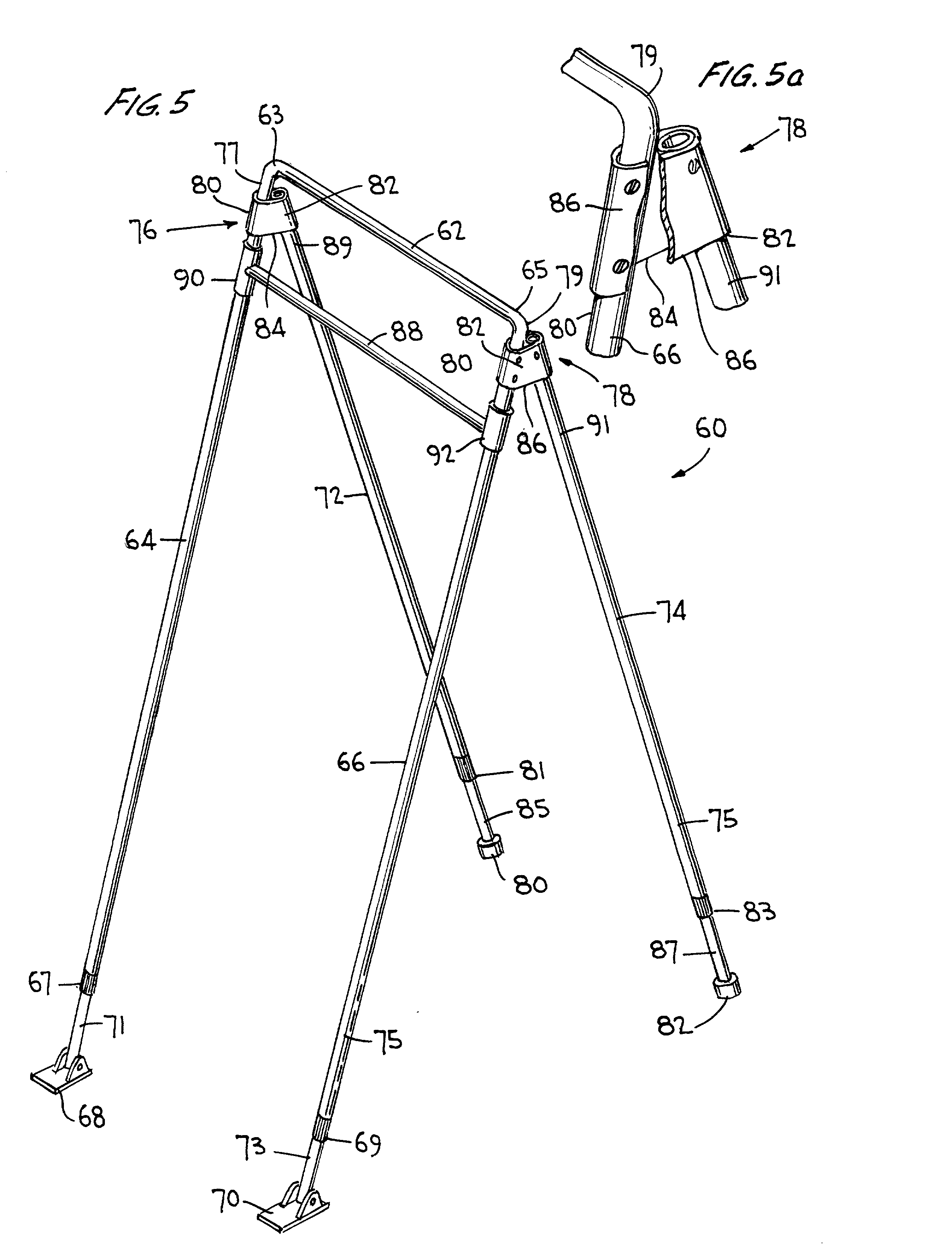Anti-constipation method and device
a technology of fecal column and anti-constipation, which is applied in the field of anti-constipation method and device, can solve the problems of increasing the strain and exertion required for complete expulsion of fecal matter, slow propulsion of the colon, and difficulty in precise categorization of distinct subtypes of idiopathic constipation. achieve the effect of slowing down the movement of the fecal column
- Summary
- Abstract
- Description
- Claims
- Application Information
AI Technical Summary
Benefits of technology
Problems solved by technology
Method used
Image
Examples
Embodiment Construction
[0033] The preferred method of the present invention is illustrated at FIG. 3, where like portions share like numbering with FIG. 1, which is described above. A person's colon, as a person uses the preferred method, is illustrated at FIG. 4, where like portions share like numbering with FIG. 2, described above.
[0034] One embodiment of an apparatus of the present invention is shown in FIGS. 5 and 5a. An apparatus of alternative embodiments of the present invention is illustrated at FIGS. 6 and 7, where like portions share like numbering. An alternative to the apparatus illustrated at FIGS. 6 and 7 is illustrated at FIG. 8. FIG. 8 shares like numbering with like portions of FIGS. 6 and 7.
[0035] Generally, as shown in FIG. 3, the preferred method of the present invention allows a user 10 of a conventional toilet 12 suffering from constipation to facilitate the evacuation of a fecal column by extending a user's arms 26 upward, straightening a user's torso 22 and moving a user's feet 18 ...
PUM
 Login to View More
Login to View More Abstract
Description
Claims
Application Information
 Login to View More
Login to View More - R&D
- Intellectual Property
- Life Sciences
- Materials
- Tech Scout
- Unparalleled Data Quality
- Higher Quality Content
- 60% Fewer Hallucinations
Browse by: Latest US Patents, China's latest patents, Technical Efficacy Thesaurus, Application Domain, Technology Topic, Popular Technical Reports.
© 2025 PatSnap. All rights reserved.Legal|Privacy policy|Modern Slavery Act Transparency Statement|Sitemap|About US| Contact US: help@patsnap.com



